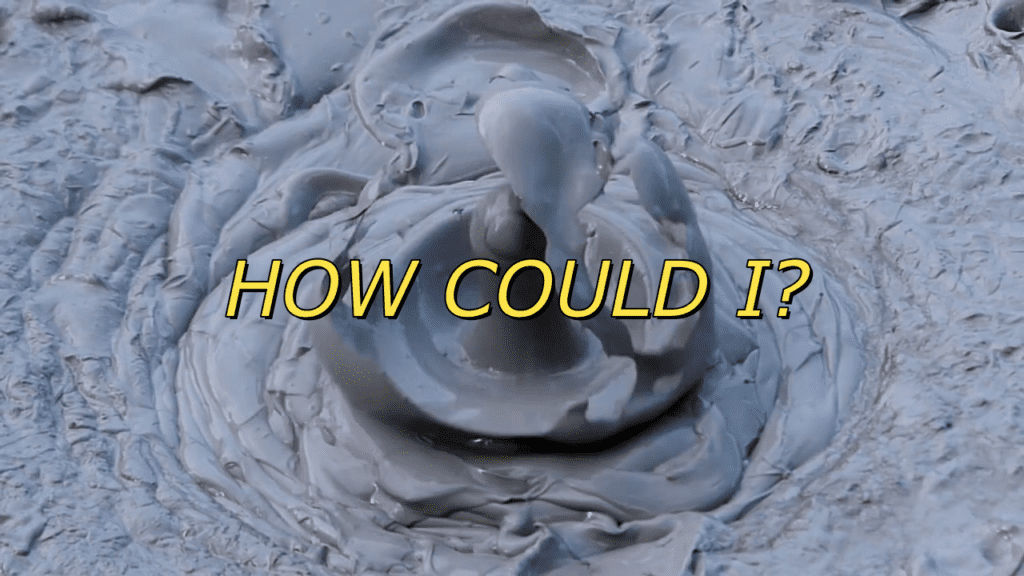
What’s all this about ‘haters’?
18 August 2022What are thoughts (in itself a thought)? As I ponder this question, a network of neurons fire to produce a movie of the mud pools of Rotorua in New Zealand. Thoughts arise, unbidden. They might be fast and varied, exciting and enjoyable, or slow, repetitive and tortuous. But they area always there. Where thoughts come from, and why we think one thing at one moment – and another thing at another – remains a mystery.
One blob explodes into life and disappears, back from whence it came and then another blob surges into life. It’s all the same. The same stuff, different rhythms and forms. In dry weather, you might see mud volcanoes; in wetter seasons, the mud become more liquid and sloppier.
Sit and experience the activity of the mind: good thoughts, bad thoughts, crazy thoughts, kind thoughts, mean thoughts, destructive thoughts, and insanely good idea thoughts all have their moment in the sun and fall away again. Except that there is no sun. Your brain is condemned to life in darkness, accompanied by the life-sustaining gurgles and pulses of your miraculous body. Information reaches it indirectly, interpreted through your senses.
The mud pool mind
Even your worst, most unpleasant thoughts are passing phenomena. A moment in time when neurons fired together and created the experience we call a thought or a feeling.
People often say things like, ‘you should think more positively’ but this would just be another thought. Another expulsion of gas from the earth’s surface, just like the so-called negative thought we were supposed to change. One expulsion of gas in liquid mud is pretty much the same as another.
Ways of Thinking About Thought
Maybe the thoughts we think aren’t so serious after all? Mine have always felt very precious. Not to mention important and original. Perhaps I’ve got this all wrong. Here are some more unusual views on thoughts and what we can do with them.
Lisa Feldman Barrett
Lisa Feldman-Barrett, Neuroscientist, Psychologist and Writer, (https://lisafeldmanbarrett.com/) takes a whole chapter of her book ‘How Emotions are Made: The Secret Life of the Brain’ discussing whether thoughts are separate from emotions and notes that many cultures don’t distinguish between the two.
She suggests you think the way you do because you feel the way you feel. Her work tells us that feelings are constructed on the fly, in response to bodily sensations, past experience, culture and context.. The classical view is that they are within us and are triggered in response to stimuli. We have an active part in constructing our emotional experience – although most of it happens below conscious awareness.

She also says that thought results from a complex network of interactions, there are no one-to-one relationships where each brain blob has one function. The best known example of this is the oft repeated idea that the amygdala is the fear centre of the brain. The reality is much more complex.
Refs from Barrett’s writing: Amygdala experiments of Paul Whalen and Prefrontal cortex and the amygdala.
Paul Hedderman
Paul Hedderman is a very funny and passionate guy. He is also a teacher and facilitator in non-duality and 12-step recovery. See more at https://www.zenbitchslap.com/.
Hedderman describes mind as ‘mechanical’. It produces thoughts and emotions automatically and usually quite predictably. The mistake we make is to confuse these fleeting states for ourselves. All kinds of peculiar activities might be experienced by me, but they are not me.
Just as the trumpet is not the music. The music is created when air is pushed through the trumpet. I am not what I think or feel any more than a trumpet is music or a ketchup bottle is a red sauce.

How did you get my thoughts?
Hedderman also describes an experience that is common in 12-step recovery meetings, the question, ‘How did you get my thoughts?’ This happens when you go to a meeting, believing that your pain and your f**k ups are unique, and then you hear the same story with minor variations, repeated over and over again. Maybe dispiriting as the bubble of specialness burst, but soon after, heart-warming and funny.
Edward Bullmore
In his book ‘The Inflamed Mind’, Edward Bullmore sets out his hypothesis that inflammation in the body is a cause of depression. In describing the after effects of dental surgery, he writes:
“My mental state was a reflection or meditation on my physical state, rather than directly caused by my physical state.”
Many of his critics say he goes too far with his claims, but many personal anecdotes suggest a connection. After being run over and breaking my leg, I developed depression. I have often had low moods, but this was something else. It was relentless, and no logical thought could budge it. You could say that the trauma and injury were causing me to feel like this. While that was not my ideal state, the depths of despair I felt were intractable and extreme. I have had a similarly intense but short-lived experience after dental surgery – just as Bullmore describes in his book.
He presents some convincing evidence for his view, including:
“And recent fMRI research has begun to produce evidence that inflammation of the body can have a direct causal effect on the human brain and mood.”
Maybe this book has been superseded by Chris Palmer’s Brain Energy. Either way, they both present compelling arguments for dumping the mind/body dualism that has held sway for over 2500 years.
Rotorua
After seeing it on TV as a child, I finally made it to Rotorua in 2002. We bathed in hot springs …. and stank of sulphur for days afterwards. Worth every unsavoury sniff.
Here’s some more information about what causes mud pools, geysers and hot springs to form https://teara.govt.nz/en/hot-springs-mud-pools-and-geysers/page-4




